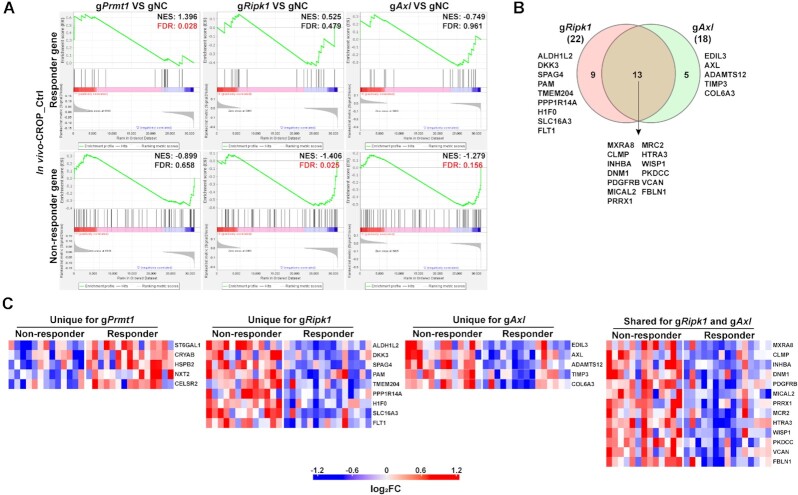Figure 5.
Inhibiting Ripk1 or Axl downregulates expression levels of genes associated with poor clinical responses to anti-PD-1, while inhibiting Prmt1 upregulates expression levels of genes associated with better clinical responses. (A) Enrichment plots of gene sets associated with anti-PD-1 responses in tumor samples with gene-specific perturbations. The mRNA expression profiles of pre-treatment tumor tissues from anti-PD-1 treated melanoma patients were previously determined. Based on clinical response to anti-PD-1 (RECIST v.1.1), patients were stratified into the non-responders (with stable or progressive disease) and responders (with complete or partial response) group. Differentially expressed genes (P< 0.05, by t-test) between tumor cells from non-responders and responders were identified. Upregulated genes and downregulated genes in non-responders were defined as the ‘ICB-non-responder’ set and the ‘ICB-responder’ set, respectively. Results from the control group in the in vivo-CROP screen were used to determine whether these two target sets are differentially expressed between MC38 cells with or without gene-specific-KO (gRNA versus gNC). The value of FDR ≤0.25 was recognized as the statistical significance and labeled with red color. (B) A Venn diagram showing the number and list of overlapped and unique genes that are from the ICB-non-responder set and differentially expressed in gRipk1 or gAxl cells. (C) Heatmaps showing relative expression levels of selected ICB-responder genes and ICB-non-responder genes in pre-treated melanoma tissues. Genes that are differentially expressed in gPrmt1, gRipk1 or gAxl cells were selected for illustration.

